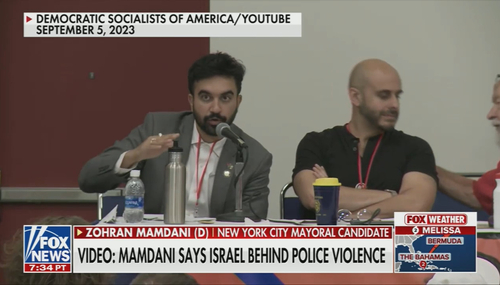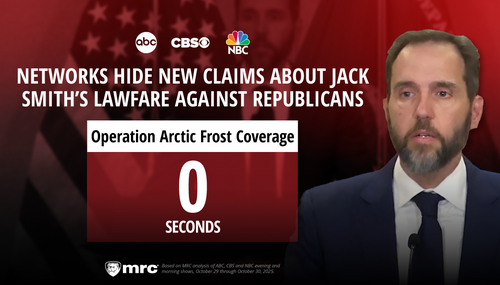 One of America’s top colleges agrees with the Media Research Center’s numerous conclusions (gasp!): The media is biased against President Donald Trump. Though slightly different methodologically than the MRC’s study in April, a new study from Harvard’s Kennedy School of Government concurs: the negative coverage during Trump’s first 100 days was unprecedented.
One of America’s top colleges agrees with the Media Research Center’s numerous conclusions (gasp!): The media is biased against President Donald Trump. Though slightly different methodologically than the MRC’s study in April, a new study from Harvard’s Kennedy School of Government concurs: the negative coverage during Trump’s first 100 days was unprecedented.
According to the Harvard study, Trump consisted of 41 percent of national television content, which included of Trump, his administration, and Republicans outside the White House received the overwhelming majoirty of that coverage. Allocated in the coverage alone, Trump soundbites constituted 65 percent, while remarks from the GOP inside and outside the White House combined for 15 percent. Meanwhile, Democrats consisted of only six percent of soundbites.
Moreover, the tone behind the coverage of the Trump agenda was negative. For instance, immigration coverage received 96 percent of negative coverage. The closest to balanced coverage on an issue was the economy with 54 percent of the media's tone as negative with 46 percent of it as positive.
The research was conducted by analyzing the news coverage based on analysis of news coverage in the print editions of the New York Times, the Wall Street Journal, and the Washington Post in addition to the newscasts on CBS, NBC, CNN, and Fox News. Analysis from three European news outlets, including the BBC, were also considered.
"Trump has received unsparing coverage for most weeks of his presidency, without a single major topic where Trump’s coverage, on balance, was more positive than negative, setting a new standard for unfavorable press coverage of a president," professor Thomas Patterson said.
Patterson, who published the study, added: "Donald Trump’s ongoing feud with the media is not the first time a president has felt wronged by the press."
What makes media coverage of Trump unique, Patterson noted, was that though "virutally every president since Nixon has obsessed over what they’ve seen as unfair treatment by the press," Trump has "taken the fight to the press, openly and with relish."
Nonetheless, Patterson warned the media to watch itself more responsibly:
If a mud fight with Trump will not serve the media’s interests, neither will a soft peddling of his coverage. Never in the nation’s history has the country had a president with so little fidelity to the facts, so little appreciation for the dignity of the presidential office, and so little understanding of the underpinnings of democracy. The media’s credibility today is at low ebb, but the Trump presidency is not the time for the press to pull back. The news media gave Trump a boost when he entered presidential politics. But a head-on collision at some point was inevitable. It’s happened, it isn’t pretty, and it isn’t over.
At the same time, the news media need to give Trump credit when his actions warrant it. The public’s low level of confidence in the press is the result of several factors, one of which is a belief that journalists are biased. That perception weakens the press’s watchdog role. One of the more remarkable features of news coverage of Trump’s first 100 days is that it has changed few minds about the president, for better or worse.
Patterson added that the majority of press coverage needs to dedicated toward policy ramifications as oppsoed to power politics. "Journalists’ focus on the Washington power game—who’s up and who’s down, who’s getting the better of whom—can be a fascinating story but at the end of the day, it’s food for political junkies," he said. "It’s remote enough from the lives of most Americans to convince them that the political system doesn’t speak for them, or to them."




